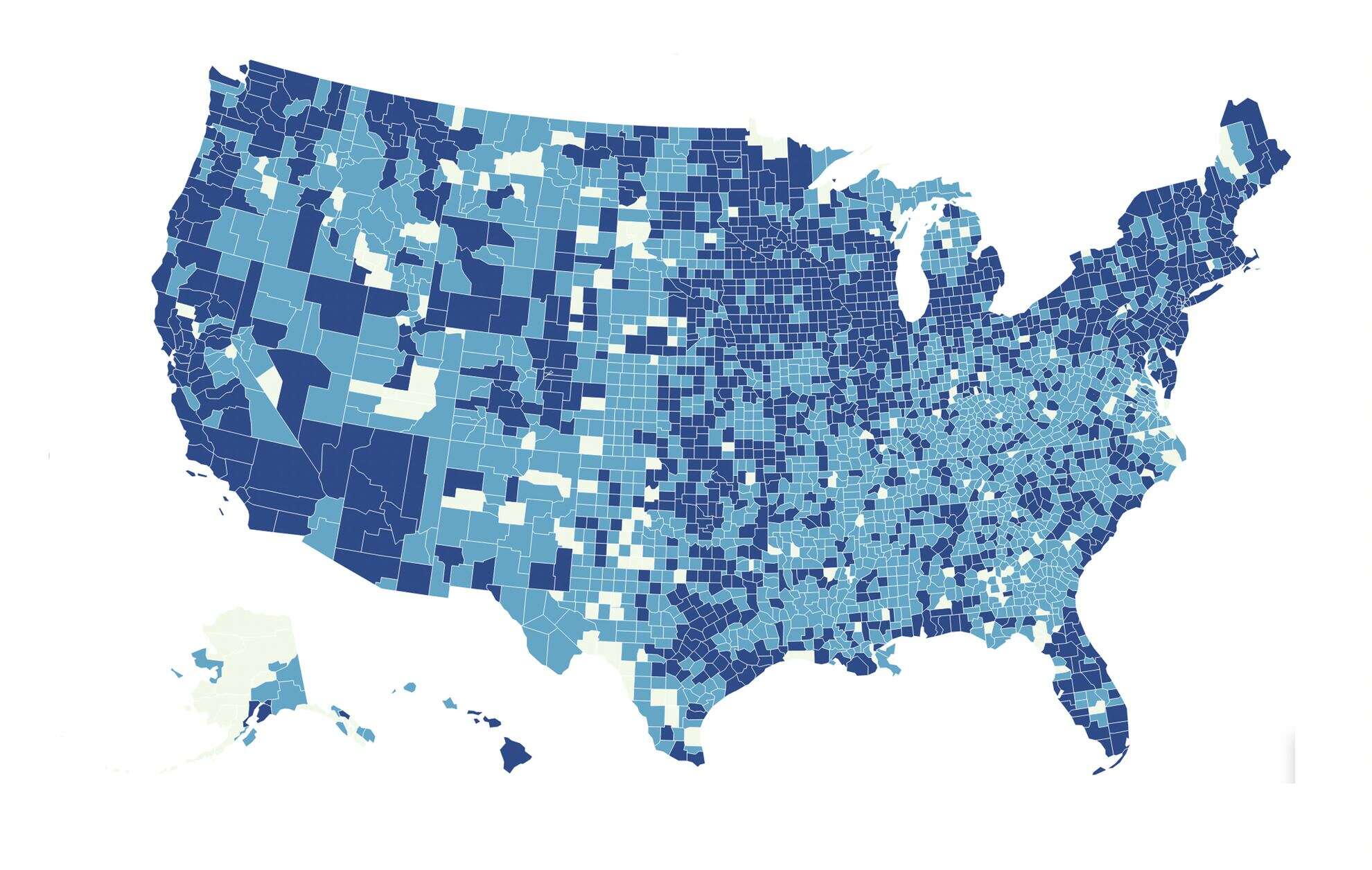
America’s newspaper industry has lost 2,500 titles and more than 40,000 newsroom jobs since the mid-2000s, new research published today has found.
The latest edition of Northwestern University’s State of Local News report finds that 70m Americans – a fifth of the nation’s population – now either live in a “news desert” or in an area at risk of becoming one.
The report noted that some digital local news startups are finding success in the US, but that they remain “scarce” and are often “located in larger cities, leaving much of the rest of the country uncovered”.
The State of Local News research, led by Penny Abernathy, a visiting professor at Northwestern University’s Medill School of Journalism, highlights the dangers of news deserts, which are said to facilitate corruption, misinformation and disinformation.
US newspaper closures
In 2004, the United States had 1,472 local daily newspapers and 7,419 non-daily newspapers, according to the Northwestern research.
In 2022, the number of local dailies has fallen by 242 to 1,230, and the non-daily figure has dropped to 2,272 (see chart from the report below).
Overall, there has been a net loss of 2,514 local newspapers – which have either been closed or merged into other titles – over the past 18 years, including 360 since late 2019.
The rate of loss over this period equals out at two closed newspapers per week.
Newspaper job losses
In 2006, the US newspaper industry employed 365,460 people, including 75,000 newsroom staff, according to the report.
By 2021, the total employment number had fallen 258,880, or 71%, to 106,580. Newsroom headcount has fallen 58% to 31,400 (see chart from the report below).
Researchers found that the number of journalists employed at digital-only news operations has increased by 10,000 since 2008, but noted that this does not compensate for the extent of the newspaper job losses.
Digital-only news is failing to fill the gap
There is some evidence to suggest that local online news companies, for-profit and non-profit, are on the rise in the United States.
LION Publishers, which represents more than 400 local independent online news companies across the US and Canada, released data last month showing its average member generated revenues of $125,000 last year, up 33% on 2020.
But the State of Local News report makes clear that progress in the digital-only space has yet to make up for the death of newspapers across the US.
“Digital alternatives remain scarce, despite an increase in corporate and philanthropic funding,” wrote Abernathy in her report.
“Over the past two years, the number of new digital-only state and local news sites, 64, slightly exceeded the number of sites that went dark.
“In 2022, there are 545 digital-only state and local sites; most employ six or fewer full-time reporters. Each state has at least one digital-only outlet.
“However, even established local digital news organizations often fail to attract the monthly traffic of television and local newspaper sites, somewhat diminishing the impact of the stories they produce.”
America’s news deserts
The Northwestern report claims that a fifth of Americans, or about 70m people, “either live in a ‘news desert’, or in a community at risk of becoming one”. It defines a news desert as an area “where residents have very limited access to credible news and information”.
To calculate the extent of the issue, Abernathy and her team investigated news coverage across America’s 3,143 counties or equivalents (see chart from the report below).
They found 4m people live in 210 counties with no local newspaper, while 1,625 counties – home to 66m residents – have one newspaper, “usually a weekly with a small reporting staff”.
The researchers noted that, “especially in the western half of the country, those single-newspaper counties, which collectively have 66m residents within their borders, can encompass several thousand square miles, dotted with multiple small and mid-sized communities, each with their own unique governance structure and issues”.
The report found that 2,000 of the nation’s counties have no daily newspaper, and fewer than half of these have a digital substitute.
Abernathy wrote: “Scholars and journalists across multiple disciplines have documented the impact on a community that loses local news, including a decrease in voter participation in local and state elections, increased corruption in both government and businesses and the malignant spread of misinformation and disinformation.”
Read the full report here.
Email pged@pressgazette.co.uk to point out mistakes, provide story tips or send in a letter for publication on our "Letters Page" blog
